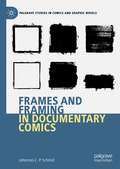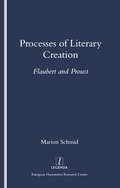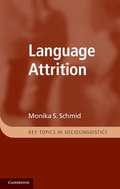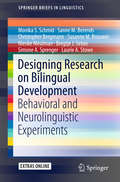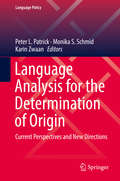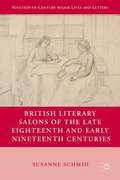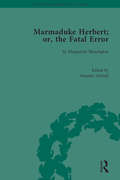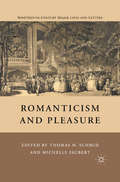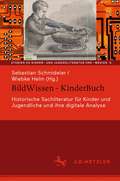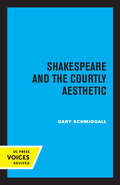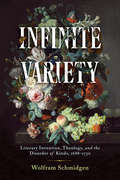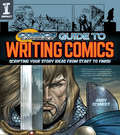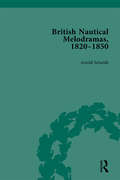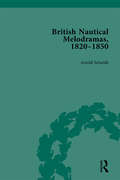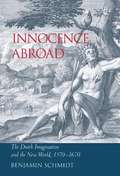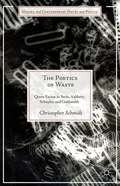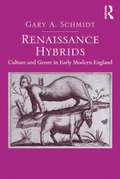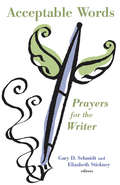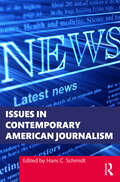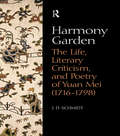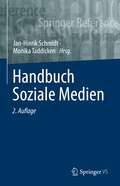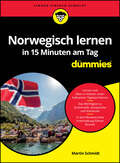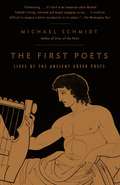- Table View
- List View
Frames and Framing in Documentary Comics (Palgrave Studies in Comics and Graphic Novels)
by Johannes C.P. SchmidFrames and Framing in Documentary Comics explores how graphic narratives reframe global crises while also interrogating practices of fact-finding. An analog print phenomenon in an era shaped by digitalization, documentary comics formulates a distinct counterapproach to conventional journalism. In what ways are ‘facts’ being presented and framed? What is documentary honesty in a world of fake news and post-truth politics? How can the stories of marginalized peoples and neglected crises be told? The author investigates documentary comics in its unique relationship to framing: graphic narratives are essentially shaped by a reciprocal relationship between the manifest frames on the page and the attention to the cognitive frames that they generate. To account for both the textuality of comics and its strategic use as rhetoric, the author combines theories of framing analysis and cognitive narratology with comics studies and its attention toward the medium’s visual frames.
Processes of Literary Creation: Flaubert and Proust
by Marion Schmid"This work examines the genetic processes that shaped two of the great literary masterpieces of modernity: Flaubert's ""L'Education Sentimentale"" and Proust's ""A la Recherche de Temps Perdu"". A detailed investigation of Flaubert's notebooks and scenarios from 1864 and 1869 and Proust's ""Cahiers"" from 1908 to 1911 reveals the almost diametrically opposed ways in which the two novels evolved in their early stages."
Language Attrition
by Monika S. Schmid'Language attrition' describes the loss of, or changes to, grammatical and other features of a language as a result of declining use by speakers who have changed their linguistic environment and language habits. In such a situation there may, for example, be simplification in the tense system or in certain properties of subordinate clauses; some vocabulary items might fall into disuse and phonetic features may be restructured. These changes can be affected by features of the speaker's environment, but also by his or her attitudes and processes of identification. This book provides a detailed and up-to-date introduction to the way in which language attrition can affect language, as well as to the extra- and sociolinguistic features involved. It also familiarizes the reader with experimental approaches to attrition and data analysis techniques and provides hands-on guidelines on how to apply them.
Designing Research on Bilingual Development
by Monika S. Schmid Sanne M. Berends Christopher Bergmann Susanne M. Brouwer Nienke Meulman Bregtje J. Seton Simone A. Sprenger Laurie A. StoweThis volume offers an in-depth description and discussion of research design for a large-scale investigation of bilingual development. It introduces and justifies a range of theoretical and methodological innovations, discusses some of the problems that come with these and proposes practical solutions. The present volume introduces a research design intended to capture a wide range of linguistic data, elicited by means of behavioral tasks, neuroimageing data and free speech from both second language learners and first language attriters of two languages (Dutch and German) representing a wide range of language combinations and ages of onset. Gathering and analyzing such a range of data comes with a multiplicity of problems, many of them linked to the fact that similar tests have to be designed across a range of languages and measurements will have to occur in various locations. The current volume presents a research design appropriate to these questions, discussing the methodological challenges of such a study. It offers advice on how to construct experimental materials which are parallel across different languages set up a protocol for additional measures which can be applied across a wide range of participants combine data from different labs when using different ERP equipment and different eyetrackers.
Language Analysis for the Determination of Origin: Current Perspectives And New Directions (Language Policy #16)
by Monika S. Schmid Peter L. Patrick Karin ZwaanThis comprehensive, up-to-date volume reports on current practices and use of Language Analysis for the Determination of Origin (LADO). Readers will find chapters on how it is done, where it is used, how it is used, and learn about recent developments on the use of LADO reports in judicial practice, and current controversies in the field. LADO is a highly controversial topic, and a relatively new branch of forensic linguistics that is used by most European and some non-European governments. When asylum seekers cannot submit documentary proof of their origin, their language can be analysed in order to assess whether their linguistic profile is in accordance with their stated origin. Around 10,000 such language analyses take place annually. This volume is based on the series of meetings of the Language and Asylum Research Group held between 2010 and 2012 and convened by the editors, and offers a state-of-the art perspective from researchers, practitioners, policymakers and stakeholders working on or with LADO.
British Literary Salons Of The Late Eighteenth And Early Nineteenth Centuries
by Susanne SchmidDuring the late eighteenth and early nineteenth centuries, British salons were veritable hothouses of political and cultural agitation, with renowned guests such as Byron, Moore, Thackeray, and Baillie. In this comprehensive study of the British salon, Susanne Schmid traces the activities of threesalonni#65533;res: Mary Berry, Lady Holland, and the Countess of Blessington. Mapping out the central place these circles held in London, this study explains to what extent they shaped intellectual debate and publishing ventures. Using a large number of sources — diaries, letters, silver-fork novels, satires, travel writing,Keepsakes, and imaginary conversations — the book establishes sociable networks of days gone by.
Marmaduke Herbert; or, the Fatal Error: by Marguerite Blessington (Chawton House Library: Women's Novels)
by Susanne SchmidIn the early and mid-nineteenth century, Marguerite Blessington, who had been born in Ireland but spent most of her life in London, became a famous salonnière; she was generally regarded as an important contemporary author, but as no literary executor took care of her oeuvre posthumously, she eventually moved into the background. Her novels, partly informed by the silver-fork genre, are typical examples of Romantic Victorianism, influenced by the Romantic cult of the solitary male self, by the fascination with Italy, and by the 1840s vogue of crime fiction, while simultaneously giving space to ambivalent reflections about Blessington’s own Irish background. This volume, as part of ‘Chawton House Library: Women’s Novels’ series, presents her 1847 novel Marmaduke Herbert; or, the Fatal Error, a highly popular piece of fiction in its day, being reprinted in German, French and American editions within a year of its publication.
Romanticism and Pleasure
by Thomas H. Schmid Michelle FaubertIn this text nine scholars discuss the aesthetics, culture, and science of pleasure in the Romantic period. Richard Sha, Denise Gigante, and Anya Taylor, among others, make a timely contribution to recent debates about issues of pleasure, taste, and appetite by looking anew at the work of figures such as Byron, Coleridge, and Austen.
BildWissen – KinderBuch: Historische Sachliteratur für Kinder und Jugendliche und ihre digitale Analyse (Studien zu Kinder- und Jugendliteratur und -medien #5)
by Sebastian Schmideler Wiebke HelmDie Verbreitung von Illustrationen im Kinder- und Jugendsachbuch erlebte aufgrund zunehmender Nachfrage und veränderter drucktechnischer Bedingungen im 19. Jahrhundert einen rasanten Aufschwung. Neue Reproduktionsverfahren ermöglichten die industrielle Massenfertigung und das Eindrucken von Abbildungen in den Textblock, was zu einem Anstieg an Illustrationen insgesamt und pro Buch führte. Sachgegenstände und Sachverhalte konnten so beispielsweise in der unterhaltend-belehrenden Sachliteratur für Kinder und Jugendliche besser anschaulich gemacht und veranschaulicht werden. - Der Sammelband dokumentiert die Erträge der Tagung „BildWissen – KinderBuch“. Aus inter- und transdisziplinärer Sicht werden darin (retrodigitalisierte) Kinder- und Jugendsachbücher des langen 19. Jahrhunderts untersucht. Ein Fokus liegt auf Methoden der Digital Humanities-Forschung, um das für den Einzelforscher nicht mehr zu bewältigende Bild- und Textmaterial innovativ analysieren zu können. Die Artikel loten den Beitrag dieser für die gegenwärtige Distant Viewing-Forschung aus, fragen nach Herausforderungen und Potenzialen für die historische Kinder- und Jugendbuchforschung und diskutieren Vor- und Nachteile eines korpusbasierten Ansatzes.
Shakespeare and the Courtly Aesthetic
by Gary R. SchmidgallThis title is part of UC Press's Voices Revived program, which commemorates University of California Press’s mission to seek out and cultivate the brightest minds and give them voice, reach, and impact. Drawing on a backlist dating to 1893, Voices Revived makes high-quality, peer-reviewed scholarship accessible once again using print-on-demand technology. This title was originally published in 1981.
Infinite Variety: Literary Invention, Theology, and the Disorder of Kinds, 1688-1730
by Wolfram SchmidgenUnnerved by the upheavals of the seventeenth century, English writers including Thomas Hobbes, Richard Blackmore, John Locke, Jonathan Swift, and Daniel Defoe came to accept that disorder, rather than order, was the natural state of things. They were drawn to voluntarism, a theology that emphasized a willful creator and denied that nature embodied truth and beauty. Voluntarism, Wolfram Schmidgen contends, provided both theological framework and aesthetic license. In Infinite Variety, he reconstructs this voluntarist tradition of literary invention.Once one accepted that creation was willful and order arbitrary, Schmidgen argues, existing hierarchies of kind lost their normative value. Literary invention could be radicalized as a result. Acknowledging that the will drives creation, such writers as Blackmore and Locke inverted the rules of composition and let energy dominate structure, matter create form, and parts be valued over the whole. In literary, religious, and philosophical works, voluntarism authorized the move beyond the natural toward the deformed, the infinite, and the counterfactual.In reclaiming ontology as an explanatory context for literary invention, Infinite Variety offers a brilliantly learned analysis of an aesthetic framed not by the rise of secularism, but by its opposite. It is a book that articulates how religious belief shaped modern literary practices, including novelistic realism, and one that will be of interest to anyone who thinks seriously about the relationship between literature, religion, and philosophy.
Comics Experience Guide to Writing Comics: Scripting Your Story Ideas from Start to Finish
by Andy SchmidtUnlock the secrets to comic-writing success! "You have a story tell. It's your story... These are ways to help you get your story out, to help you become the writer inside of yourself." This is the book on writing you've been waiting for, a nuts-and-bolts guide to writing fiction for comics. While it is true that there is no set way to write a comic book script, no set format, no industry standard, it is equally true that someone learning to write comics needs structure. That's where Comics Experience© Guide to Writing Comics can help. Comics veteran Andy Schmidt offers sage advice and practical instruction for everything from writing realistic dialogue to communicating your ideas to other comics professionals. Inside you'll find:23 exercises to help you put fundamental writing principles into practiceSample script formats, page-by-page outlines, scene-by-scene outlines and short pitches that show you exactly how to create these important components of the writing processDiagrams and pages from published comics to illustrate key conceptsTips on professional development, networking and navigating the comics industryThese pages include all the tools you need to write great comics, but where do you begin? Begin with yourself. You have to know--not believe--know: You can do this, and this guide will help. Now, begin with Chapter 1...
British Nautical Melodramas, 1820–1850: Volume III
by Arnold SchmidtDuring the 1820s and 30s nautical melodramas "reigned supreme" on London stages, entertaining the mariners and maritime workers who comprised a large part of the audience for small theatres with the same sentimental moments and comic interludes of domestic melodrama mixed with patriotic images that communicated and reinforced imperial themes. However, generally the study of British theatre history moves from medieval and renaissance plays directly to the realism and naturalism of late Victorian and modern drama. Readers typically encounter a gap between Restoration and eighteenth-century plays like those of Oliver Goldsmith and Richard Brinsley Sheridan, and late-nineteenth plays by Henrik Ibsen and Oscar Wilde. Nineteenth-century drama, with the possible exception of plays by Byron, Shelley, and Wordsworth, remains all but invisible. Until recently, melodramatic plays written and performed during this "gap" received little scholarly attention, but their value as reflections of Britain’s promulgation of imperial ideology — and its role in constructing and maintaining class, gender, and racial identities — have given discussions of melodrama force and momentum. The plays in included in these three volumes have never appeared in a critical anthology and most have not been republished since their original nineteenth-century editions. Each play is transcribed from the original documents and includes an author biography, a headnote about the play itself, full annotations with brief definitions of unfamiliar vocabulary, and explanatory notes. Comprehensive editorial apparatus details the nineteenth-century imperial, naval, political, and social history relevant to the plays’ nautical themes, as well as discussing nineteenth-century theatre history, melodrama generally, and the nautical melodrama in particular. Contemporary theatre practices — acting, audiences, staging, lighting, special effects — are also examined. An extensive bibliography of primary and secondary texts; a complete index; and contemporary images of the actors, theatres, stage sets, playbills, costumes, and locales have been compiled to aid study further. The appendices include maps of Britain, Europe, and the East and West Indies.
British Nautical Melodramas, 1820–1850: Volume II
by Arnold SchmidtDuring the 1820s and 30s nautical melodramas "reigned supreme" on London stages, entertaining the mariners and maritime workers who comprised a large part of the audience for small theatres with the same sentimental moments and comic interludes of domestic melodrama mixed with patriotic images that communicated and reinforced imperial themes. However, generally the study of British theatre history moves from medieval and renaissance plays directly to the realism and naturalism of late Victorian and modern drama. Readers typically encounter a gap between Restoration and eighteenth-century plays like those of Oliver Goldsmith and Richard Brinsley Sheridan, and late-nineteenth plays by Henrik Ibsen and Oscar Wilde. Nineteenth-century drama, with the possible exception of plays by Byron, Shelley, and Wordsworth, remains all but invisible. Until recently, melodramatic plays written and performed during this "gap" received little scholarly attention, but their value as reflections of Britain’s promulgation of imperial ideology — and its role in constructing and maintaining class, gender, and racial identities — have given discussions of melodrama force and momentum. The plays in included in these three volumes have never appeared in a critical anthology and most have not been republished since their original nineteenth-century editions. Each play is transcribed from the original documents and includes an author biography, a headnote about the play itself, full annotations with brief definitions of unfamiliar vocabulary, and explanatory notes. Comprehensive editorial apparatus details the nineteenth-century imperial, naval, political, and social history relevant to the plays’ nautical themes, as well as discussing nineteenth-century theatre history, melodrama generally, and the nautical melodrama in particular. Contemporary theatre practices — acting, audiences, staging, lighting, special effects — are also examined. An extensive bibliography of primary and secondary texts; a complete index; and contemporary images of the actors, theatres, stage sets, playbills, costumes, and locales have been compiled to aid study further. The appendices include maps of Britain, Europe, and the East and West Indies.
British Nautical Melodramas, 1820–1850: Volume I
by Arnold SchmidtDuring the 1820s and 30s nautical melodramas "reigned supreme" on London stages, entertaining the mariners and maritime workers who comprised a large part of the audience for small theatres with the same sentimental moments and comic interludes of domestic melodrama mixed with patriotic images that communicated and reinforced imperial themes. However, generally the study of British theatre history moves from medieval and renaissance plays directly to the realism and naturalism of late Victorian and modern drama. Readers typically encounter a gap between Restoration and eighteenth-century plays like those of Oliver Goldsmith and Richard Brinsley Sheridan, and late-nineteenth plays by Henrik Ibsen and Oscar Wilde. Nineteenth-century drama, with the possible exception of plays by Byron, Shelley, and Wordsworth, remains all but invisible. Until recently, melodramatic plays written and performed during this "gap" received little scholarly attention, but their value as reflections of Britain’s promulgation of imperial ideology — and its role in constructing and maintaining class, gender, and racial identities — have given discussions of melodrama force and momentum. The plays in included in these three volumes have never appeared in a critical anthology and most have not been republished since their original nineteenth-century editions. Each play is transcribed from the original documents and includes an author biography, a headnote about the play itself, full annotations with brief definitions of unfamiliar vocabulary, and explanatory notes. Comprehensive editorial apparatus details the nineteenth-century imperial, naval, political, and social history relevant to the plays’ nautical themes, as well as discussing nineteenth-century theatre history, melodrama generally, and the nautical melodrama in particular. Contemporary theatre practices — acting, audiences, staging, lighting, special effects — are also examined. An extensive bibliography of primary and secondary texts; a complete index; and contemporary images of the actors, theatres, stage sets, playbills, costumes, and locales have been compiled to aid study further. The appendices include maps of Britain, Europe, and the East and West Indies.
Innocence Abroad: The Dutch Imagination and the New World, 1570-1670
by Benjamin SchmidtInnocence Abroad explores the process of encounter that took place between the Netherlands and the New World in the sixteenth and seventeenth centuries. The "discovery" of America coincided with the foundation of the Dutch Republic, a correspondence of much significance for the Netherlands. From the opening of their Revolt against Hapsburg Spain through the climax of their Golden Age, the Dutch looked to America--in political pamphlets and patriotic histories, epic poetry and allegorical prints, landscape painting and decorative maps--for a means of articulating a new national identity. This book demonstrates how the image of America fashioned by the Dutch, and especially the twin topoi of "innocence" and "tyranny," became integrally associated with evolving political, moral and economic agenda. It investigates the energetic Dutch response to the New World while examining, more generally, the operation of geographic discourse and colonial ideology within the Dutch Golden Age.
The Poetics of Waste
by Christopher SchmidtModernist debates about waste - both aesthetic and economic - often express biases against gender and sexual errancy. The Poetics of Waste looks at writers and artists who resist this ideology and respond by developing an excessive poetics.
Renaissance Hybrids: Culture and Genre in Early Modern England
by Gary A. SchmidtIn the first book-length study explicitly to connect the postcolonial trope of hybridity to Renaissance literature, Gary Schmidt examines how sixteenth- and seventeenth-century English authors, artists, explorers and statesmen exercised a concerted effort to frame questions of cultural and artistic heterogeneity. This book is unique in its exploration of how 'hybrid' literary genres emerge at particular historical moments as vehicles for negotiating other kinds of hybridity, including but not limited to cultural and political hybridity. In particular, Schmidt addresses three distinct manifestations of 'hybridity' in English literature and iconography during this period. The first category comprises literal hybrid creatures such as satyrs, centaurs, giants, and changelings; the second is cultural hybrids reflecting the mixed status of the nation; and the third is generic hybrids such as the Shakespearean 'problem play,' the volatile verse satires of Nashe, Hall and Marston, and the tragicomedies of Beaumont and Fletcher. In Renaissance Hybrids, Schmidt demonstrates 'postmodern' considerations not to be unique to our own critical milieu. Rather, they can fruitfully elucidate cultural and literary developments in the English Renaissance, forging a valuable link in the history of ideas and practices, and revealing a new dimension in the relation of early modern studies to the concerns of the present.
Acceptable Words: Prayers for the Writer
by Gary Schmidt Elizabeth StickneyAcceptable Words offers prayers that correspond with each stage of the writer's work -- from finding inspiration to penning the first words to "offering it to God" at completion. Gary Schmidt and Elizabeth Stickney, experienced writers themselves, introduce each chapter of prayers with pithy pastoral reflections that will encourage writers in their craft.This welcome spiritual resource for writers includes both ancient and contemporary poems and prayers -- some of which were written especially for this volume. A thoughtful gift for any writer, Acceptable Words will accompany writers on their spiritual journey, lending words of praise and petition specifically crafted to suit their unique vocation.Watch the trailer:
Issues in Contemporary American Journalism
by Hans C. SchmidtBringing together the diverse perspectives of over 20 leading journalism scholars, this collection provides an original insight into the history of American journalism and issues that exist and have existed within the industry for decades. The culture of journalism is in constant flux, with both individual journalists and the news industry as a whole regularly finding themselves at the center of controversy. While heightened in recent years, such controversy is not new and could in fact be considered a hallmark of the profession. With this in mind, this book presents original perspectives into issues and debates regarding the role of journalism in America, journalistic objectivity and ethics, diversity and representation, war and conflict reporting, local news, fake news, and hostility towards journalists. Each of the seven sections begins with a topical overview and ends with a short essay written by a leader in the field. Issues in Contemporary American Journalism is recommended reading for anyone studying the history and evolution of journalism in the US at an advanced level.
Harmony Garden: The Life, Literary Criticism, and Poetry of Yuan Mei (1716-1798)
by J. D. SchmidtThis is the first complete study of China's most popular eighteenth-century poet in any Western language. The work consists of a detailed biography, a study of Yuan's revolutionary reinterpretation of Chinese literary theory, and an analysis of his many contributions to the more original genres of Qing-dynasty (1644-1911) poetry such as narrative, historical, didactic, eccentric, and nature verse. The study is concluded by a generous and representative sampling of Yuan's poetry in translation, the first to do justice to the wide variety and richness of his oeuvre. Although many shorter poems are selected, this is the first translation to include his outstanding longer poetry. Harmony Garden will completely revise current attitudes in the west concerning classical Chines literature during the eighteenth century, a period that was long viewed as one of decline, but now appears to equal the golden ages of antiquity.
Handbuch Soziale Medien
by Jan-Hinrik Schmidt Monika TaddickenSoziale Medien erleichtern es Menschen, Informationen aller Art zu teilen und soziale Beziehungen zu pflegen. Sie sind in den letzten Jahren und Jahrzehnten zu einem wesentlichen Bestandteil der digitalen Kommunikation geworden und verändern die Strukturen gesellschaftlicher Öffentlichkeit, aber auch den alltäglichen Austausch über privat-persönliche Themen. Ihre kommunikative Architektur nährt Hoffnungen auf verbesserte gesellschaftliche Partizipation genauso wie Befürchtungen, immer mehr Bereiche des Lebens würden kommerzialisiert und überwacht. Das Handbuch bereitet den aktuellen Forschungs- und Diskussionsstand zu Nutzung, gesellschaftlicher Einbettung und Folgen der sozialen Medien aus der Kommunikationswissenschaft und den angrenzenden Sozialwissenschaften auf. Für die zweite Auflage wurden die Beiträge überarbeitet und aktualisiert sowie das Handbuch um neue Beiträge ergänzt.
Norwegisch lernen in 15 Minuten am Tag für Dummies (Für Dummies)
by Martin SchmidtNur ein Viertelstündchen Norwegisch am Tag Sie wollen Norwegisch lernen, aber der Gedanke, stundenlang Vokabeln und Grammatik zu pauken, schreckt Sie ab? Dann ist dieses Buch genau das Richtige für Sie! In kurzen, auf 15 Minuten pro Tag begrenzten Lektionen bringt es Ihnen auf unterhaltsame Weise die norwegische Sprache näher. So erfahren Sie im Handumdrehen alles Wichtige über Grammatik, Aussprache und übliche Redewendungen. Durch regelmäßige Wiederholungsfragen können Sie Ihr Wissen testen und mithilfe des zum Download verfügbaren Audiomaterials auch die Aussprache üben. Nach nur drei Monaten beherrschen Sie die Grundlagen spielend. Sie erfahren Wie Sie in jeder Situation die richtigen Worte finden Mit welchen Redewendungen Sie brillieren Welche Wörter Sie nicht verwechseln sollten Wie Sie das Norwegische richtig aussprechen
The First Poets: Lives of the Ancient Greek Poets
by Michael SchmidtSchmidt (writing, Manchester Metropolitan U. ) relates what is known about the lives of 25 poets or groups of poets, but what is known most about them are the poems that were written and have survived, and so they consume most of his attention. He begins of course with Orpheus of Thrace. Others of the better known include Homer, Hesiod, Alcaeus of Mytilene, Sappho of Eressus, Solon of Athens, Anacreon of Teos, Pindar of Thebes, and Apollonius of Rhodes. Annotation ©2004 Book News, Inc. , Portland, OR (booknews. com)
